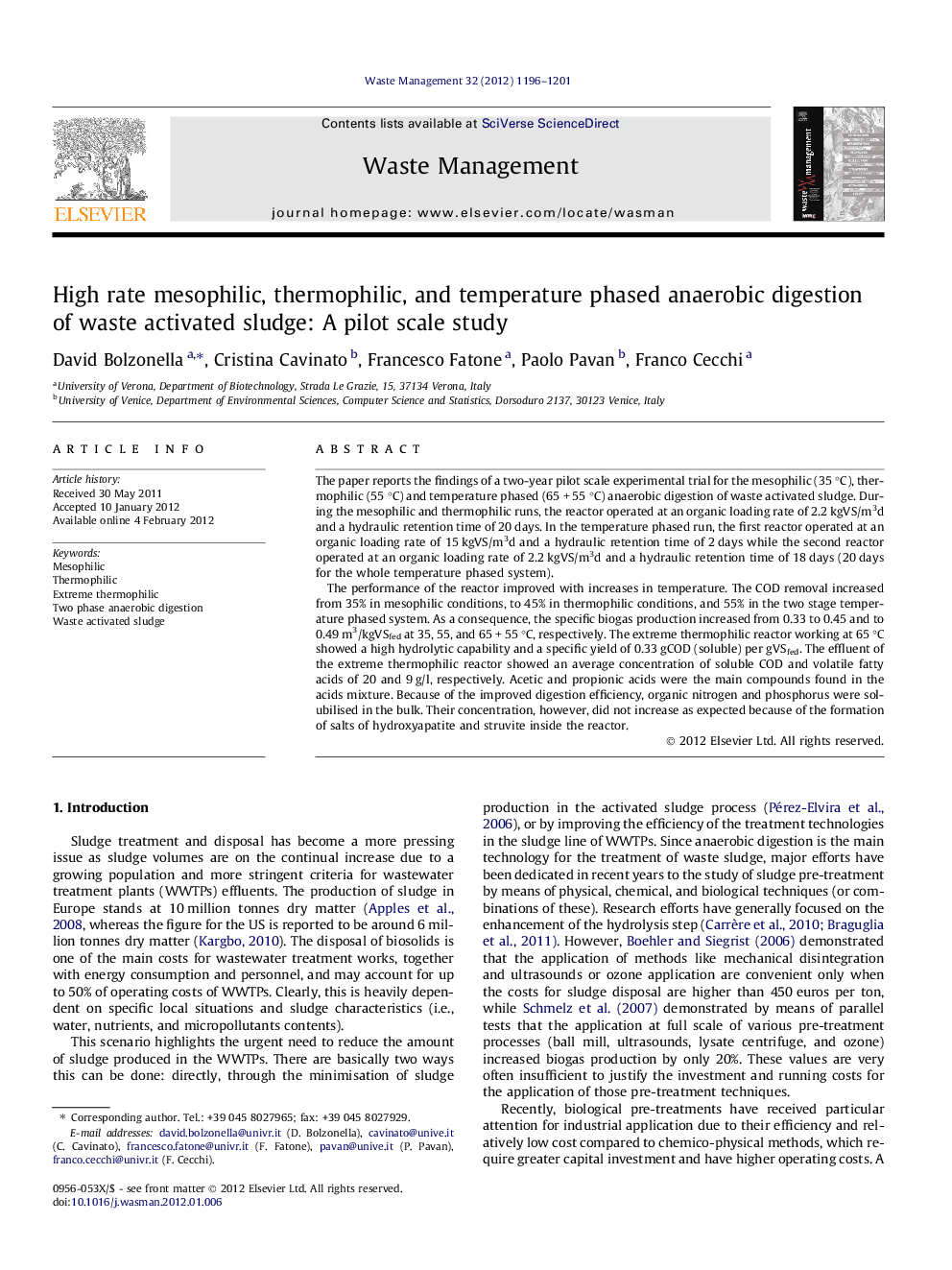| Article ID | Journal | Published Year | Pages | File Type |
|---|---|---|---|---|
| 4471807 | Waste Management | 2012 | 6 Pages |
The paper reports the findings of a two-year pilot scale experimental trial for the mesophilic (35 °C), thermophilic (55 °C) and temperature phased (65 + 55 °C) anaerobic digestion of waste activated sludge. During the mesophilic and thermophilic runs, the reactor operated at an organic loading rate of 2.2 kgVS/m3d and a hydraulic retention time of 20 days. In the temperature phased run, the first reactor operated at an organic loading rate of 15 kgVS/m3d and a hydraulic retention time of 2 days while the second reactor operated at an organic loading rate of 2.2 kgVS/m3d and a hydraulic retention time of 18 days (20 days for the whole temperature phased system).The performance of the reactor improved with increases in temperature. The COD removal increased from 35% in mesophilic conditions, to 45% in thermophilic conditions, and 55% in the two stage temperature phased system. As a consequence, the specific biogas production increased from 0.33 to 0.45 and to 0.49 m3/kgVSfed at 35, 55, and 65 + 55 °C, respectively. The extreme thermophilic reactor working at 65 °C showed a high hydrolytic capability and a specific yield of 0.33 gCOD (soluble) per gVSfed. The effluent of the extreme thermophilic reactor showed an average concentration of soluble COD and volatile fatty acids of 20 and 9 g/l, respectively. Acetic and propionic acids were the main compounds found in the acids mixture. Because of the improved digestion efficiency, organic nitrogen and phosphorus were solubilised in the bulk. Their concentration, however, did not increase as expected because of the formation of salts of hydroxyapatite and struvite inside the reactor.
► High temperatures were tested in single and two-stage anaerobic digestion of waste activated sludge. ► The increased temperature demonstrated the possibility of improving typical yields of the conventional mesophilic process. ► The temperature phased anaerobic digestion process (65 + 55 °C) showed the best performances with yields of 0.49 m3/kgVSfed. ► Ammonia and phosphate released from solids destruction determined the precipitation of struvite in the reactor.
